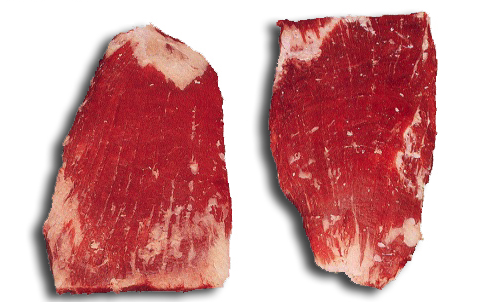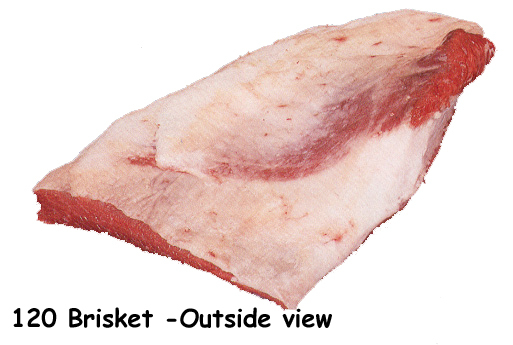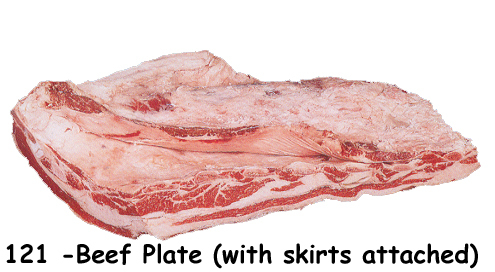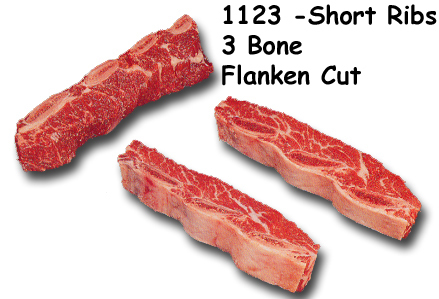
Getting low on the steer you will find exceptional eating if you know how to treat the product. Typically, the primal cuts that need some special attention to cleaning, cutting, and preparing yield perhaps the tastiest meat of all. Starting at the front of the steer beneath the chuck and continuing towards the back we have the brisket (also the foreshank), plate, and flank. This area is referred to as the ‘breast’ on lamb and veal but on beef, it is much larger and is broken down differently.
The Brisket

The brisket is made up of two muscles normally referred to as the flat and the point. The flat is, well, flatter (thus the name) and the point is the smaller, fattier, triangular piece that is towards the front of the animal. These two muscles are connected by a layer of fat and can be separated or cooked together. Because of the type of muscle, the connective tissue content, the grain, and also the fat content, the brisket is typically a good choice for barbecue and other slow-cooked preparations. The brisket makes an exceptional corned beef, pot roast, and also is included in many ground beef preparations for fat and flavor depth.
The Plate

Many times we associate the plate with short ribs, but the entire plate is probably better visualized if you think of much bigger pork spareribs! The plate comes from below the rib primal cut. Both the inside skirt and the finer quality outside skirt are attached to the plate. The plate short ribs are cut from the 6th, 7th, and 8th bone. A traditional cut is a 2-inch thick 3 bone across cut called the flanken (sometimes seen as a 3x2 cut short rib).

The same 3 bones cut at about a quarter-of-an-inch thick are often referred to as Korean style short ribs. A short rib plate from an Angus steer can be braised whole. Whole bones separated and cut in about 2-inch lengths are sometimes known as English cut short ribs. The short rib plate can also be boned out and turned into boneless short ribs.
The Flank
Finally, we have the flank primal cut, which weighs in at about 20-pounds. The flank steak itself is only about 2-pounds, the rest of the primal is typically ground. The flank steak often referred to as bavette steak in French. Bavette translates to bib and the flank resembles a flat bib, although probably the most common cut referred to as bavette in the U.S. is the bottom sirloin flap an extension of the flank. The original London Broil from back in the 1930s was actually a marinated flank steak, although today a number of different cuts can be cooked like this.
The flank is about 14-inches long and runs from about 1-inch thick at the pointy end up to 2-inch thick at the wide end. The flank has coarse long muscle fibers with very little connective tissue. A classic beef Braciole is usually prepared with a flank steak that is stuffed, rolled, tied and braised. Perhaps the finest way to prepare a flank is to marinate, sear, rest, and slice thinly against the grain medium rare.
Get in touch with one of our team to find out more about these beautiful cuts and our premium Storm Hill Angus Beef.
 BACK
BACK